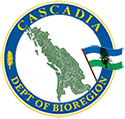TZUM
[tsŭm] or [chŭm] — adjective, noun.
Meaning: Color; spot; spotted; stripe; writing; write; written; mark; marked; figures; colors; printing; pictures; paint; painted; ornamental colors; tint; mixed colors; festive colors.
Origin: From a Chinookan particle ts’am ‘variegated (in color)’, ts’em ‘spotted’ > Lower Chinook ch’əám, “variegated”
Sometimes spelled as ‘chum’, the word is most famously applied to the Chum Salmon (Oncorhynchus keta), found from southern California to Alaska and off the coasts of Japan and Korea, while the term “tzum sammon” is used to refer to the steelhead and any number of spotted trout in the region.
The extremely versatile expression “mamook tzum” can mean anything from ‘to write’, ‘to mark’, ‘to draw’, ‘to paint’, ‘to print’, ‘dye’, ‘copy’, ‘engrave’, and ‘subscribe’.
Someone like a “tzum man” (writer; penman; clerk) would likely use a “tzum stick” (pencil; pen; paintbrush) and “klale chuck kopa mamook tzum” (ink) to create “tzum pepah” (picture; writing; a letter; printed material) or denote “tzum illahee” (surveyed land).
Likewise, a woodsman will “tzum kah” (track) or “tzum kah lepee mitlite” (mark where the foot was) while they, “mamook tzum illahee” (survey) or “mamook tzum iktas” (assess) the area to “mamook kunsih” (enumerate) items in it.
While this word also applies to a “tzum seeowist” (photograph; postage stamp), “tzum pasese” (quilt; bed quilt), or “tzum sail” (calico; printed cloth), it could just as easily have to do with colored stones or availability of ochre or other pigments.



Post a comment